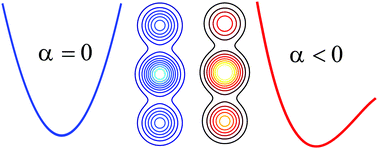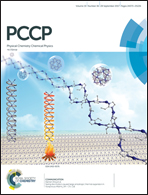Anharmonic vibrational effects in linear and two-dimensional electronic spectra†
Abstract
For the description of vibrational effects in electronic spectra, harmonic vibrations are a convenient and widespread model. However, spectra of larger organic molecules in solution usually exhibit signs of vibrational anharmonicity, as revealed by deviation from the mirror image symmetry between linear absorption and emission spectra of the harmonic case. For perylene and terylene, two molecules with rigid Pi-electron systems and strong vibrational-electronic coupling, we employ a simple but effective theoretical model, which introduces cubic anharmonicity in the potentials of electronic surfaces. Vibrational anharmonicity is then readily quantified based on the experimentally measured peak ratio of the first vibronic progression peaks in linear absorption and emission. This method is straightforward but not applicable if emission from the initially excited state is short lived. For such a case, we employ two-dimensional electronic spectroscopy in the visible as a comprehensive time-resolved technique for the experimental determination of the vibrational anharmonicity of pinacyanol iodide, a solvated dye molecule exhibiting ultrafast excited state isomerization. We show that the ratio between certain cross peak amplitudes in two-dimensional electronic spectra is a direct measure of vibrational anharmonicity.

- This article is part of the themed collection: 2017 PCCP HOT Articles


 Please wait while we load your content...
Please wait while we load your content...